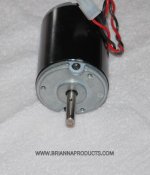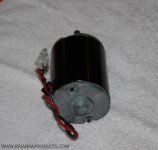Hey Jim,
I think you want to use peak current to measure the HP of the motor. When it was spinning up, it was overcoming the inertia of the motor windings and that of the headstock spindle. It could probably pull more than that if you stalled it, but then you'd likely burn up the windings.
While you had some load on it - the headstock spindle - it didn't sound like you were turning anything, which would put more load on the motor. The more load, the more amps it's going to pull until it stalls or the drive belt slips. That motor can probably pull some more current than 10 amps before it melts down, but 10 amps seemed like a useable number.
I tried to Google a more definitive answer/technique, but didn't come up with anything better.
There's probably some mechanical or electrical engineer on this forum sitting back giggling at my logic, but "That's my story and I'm sticking to it"


Gary


